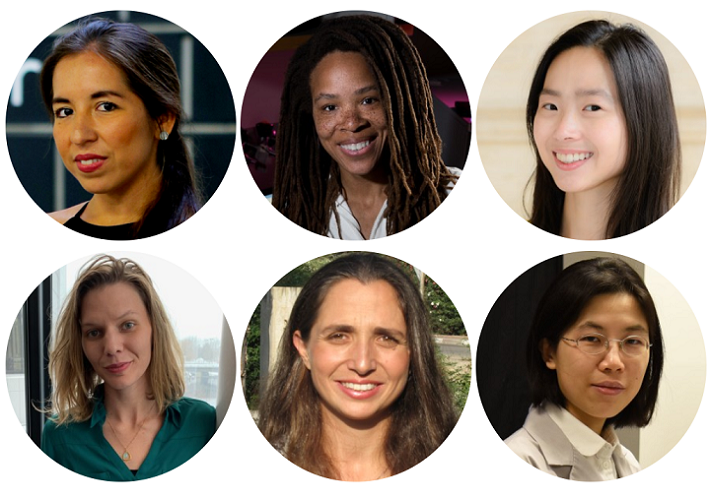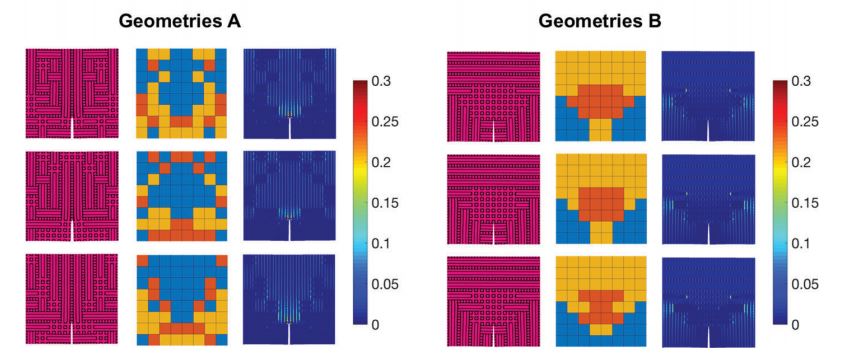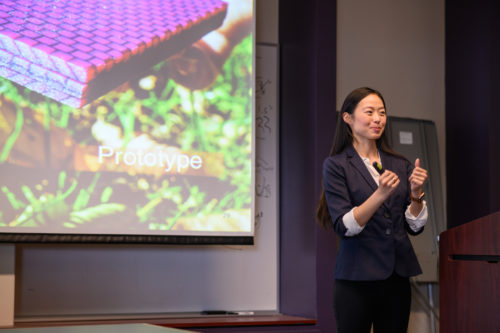In 2017 multinational pharmaceutical company Johnson & Johnson, launched the WiSTEM2D Scholars Award program to increase the representation of women in six scientific and technical fields. Open to assistant and associate academic professors from across the STEM field, winners of the prize are awarded $150,000 in funding and three years of mentorship from Johnson & Johnson to help support critical advances in their careers.
The 2019 winner of the WiSTEM2D is Grace X. Gu. Part of the Mechanical Engineering faculty at UC Berkeley, Professor Gu has conducted pioneering work in the field of additive manufacturing, including recent work on a self-correcting 3D printer. 3D Printing Industry got in contact with Professor Gu to to learn more about this particular project, and future hopes for 3D printing in education.

A self correcting 3D printer
Gu has been involved in additive manufacturing for the last 5 years, and joined the UC Berkeley faculty of Mechanical Engineering in 2018 after finishing her PhD. Since then she has been looking to address the limitations of additive manufacturing.
An important pillar of Gu’s work has been the development of a self correcting 3D printer. The goal is to create a 3D printer capable of “detecting common issues” during manufacture (such as overhanging, underextrusion, stringing, porosity, dimensional tolerance) and adjust printing parameters to fix the issues in real time. In order to achieve these results, Professor Gu has developed a machine learning program for the 3D printer.
“During the printing process,” Gu explains, “images of the part will be fed into a machine learning classification model that will classify the problem (or no problem) and use knowledge generated during its training period to guide the next knobs to turn to fix the problem.”
“Currently, we are working on this model for various polymers (PLA, ABS, TPU, PC) but hope to expand it to metallic materials as well in the future. We believe that a similar framework can be applied for various materials (though classification labels may be slightly different for different materials).”

The overall goal of Professor Gu’s work is to make faster, more reliable 3D printers that waste less material, and have implications for the wider manufacturing sector. Professor Gu adds, “We believe that bringing this streamlined manufacturing process to the industrial level will help introduce the products of tomorrow, such as custom-made medical devices and efficient solar cells, to our everyday lives.”
Knowledge is key
The development of the self correcting 3D printer is what earned Professor Gu the 2019 Johnson & Johnson Women in STEM2D award in the field of manufacturing.
Commenting on her win she said, “I am so grateful to Johnson and Johnson for this award and am excited to use the funding to work with the undergraduate and graduate students in my lab to further develop the self-correcting technology.”
Gu now plans to spend time with her students to develop the code and interface necessary to build these school-friendly 3D printers.
However these printers are not very useful if school children don’t know how to use them, which is why Gu is going to great length to involve herself in lower education.
Speaking with regards to introducing user friendly 3D printers for the classroom, Gu said, “Currently, there are a lot of barriers to 3D printing because learning how to create the designs using Computer Aided Design (CAD) has a steep learning curve. I hope to collaborate with teachers and bring to their classrooms user-friendly, accessible 3D printers.”
Her aim to create a simplified CAD software, like Tinkercad with “pre-defined” shapes that students will be able to use as “basic building blocks” for their designs. “I want to make it open-source so that educators around the world can further develop this 3D printer and incorporate it into their school curriculum,” Gu said.

Not limiting learning to schools either, many of Professor Gu’s central ideas focus on enabling end users – of any age – to fabricate objects of interest without knowledge of material science and design.
“In this case, users are not limited to inputting CAD drawings to a printer interface, but rather high-level descriptions of the object they want (weight, function, property requirements) which the computer will use to generate shapes and choose materials that satisfy the user’s requirements,” she said.
Getting more women interested in additive manufacturing
Despite her own successes Professor Gu still sees steep learning curves and inadequate infrastructure as a barrier to women entering the additive manufacturing sector.
“Personally, I am interested in developing a summer workshop for high school females to get a hands-on 3D-printing experience” Gu explains. “In this workshop, they will experiment through design modulus where they learn how to use CAD, design their own contraptions, and watch them be manufactured with 3D printers.”
Through this the students will have the opportunity to gain a deeper understanding of additive manufacturing by getting hands on with materials and 3D printing machines.
Gu added, “I hope with this early exposure to additive manufacturing, we can empower more females to pursue careers in this field.”
Vote for your 3D Printing Innovation of the Year in the 2019 3D Printing Industry Awards.
Subscribe to the 3D Printing Industry newsletter for the latest news in additive manufacturing. You can also keep connected by following us on Twitter and liking us on Facebook. Looking for a career in additive manufacturing? Visit 3D Printing Jobs for a selection of roles in the industry.
Featured image shows Grace X. Gu. Image via UC Berkeley



